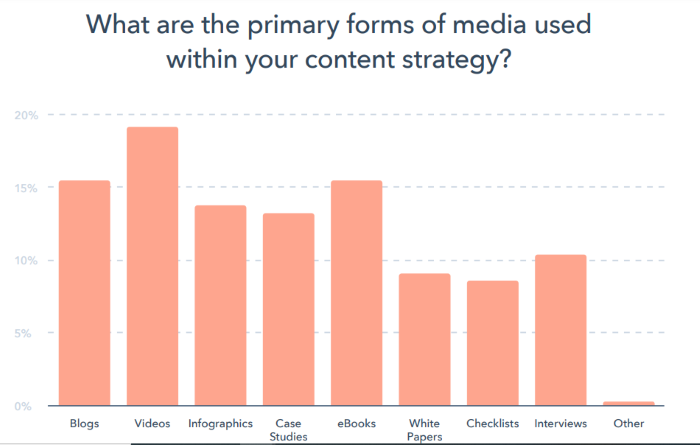
To use content marketing to grow your business you must develop a strategy. Establish goals that guide your content marketing. You also need to establish KPIs. Finally, you should create a content schedule. These steps will help to identify who you want to reach and how to deliver content. Once you have this information, you can start to plan how to get there.
Create a content marketing strategy
Successful content marketing strategies include developing an editorial schedule and scheduling regular content. It includes planning out the types of content that will appeal to your audience, identifying who they are, and ensuring that each piece of content is well-written. A successful marketing strategy requires consistency. Having enough content to publish on a regular basis will help you maintain a constant stream of new content. It is important that you consider the stages of life and how they consume content.
Setting SMART goals
When planning your content marketing strategy, setting SMART goals for your strategy is vital. As a general rule, SMART goals should be specific, measurable, achievable, realistic, and time-bound. This framework will help keep you on track and measure your success. It's important to make goals that are attainable and challenge people. To keep you on track, it's important to set time limits.

Defining KPIs
Without metrics, a content marketing strategy cannot be complete. You can track your progress by using page views, which is a simple way to measure it. You can segment traffic by channel, and see which channels are driving more traffic. This lets you see exactly where your efforts are paying off. However, you don't just need to know how many pages were viewed. To truly understand the success of your content marketing, you must also consider conversion rates and other metrics.
Create a content calendar
A content calendar is vital for creating high-quality, consistent content. It can help you identify trends and topics that are receiving the most attention. You can use it as a tool to help plan for how you want to publish and reuse your content on multiple channels. A content planner can help you better manage your content production process. It can help identify any gaps in your content marketing strategy. It's also an effective way to track your content output and identify opportunities for collaboration.
Attracting members of the audience
An effective content marketing strategy can help you draw people to your website, and increase sales. There are many formats for content marketing, including articles, videos and photos. This strategy determines which content is most beneficial to your company and which are not. You can also define your content distribution channels and goals. To attract audience members, your content should be useful to your target audience. We will be discussing some of the many benefits of content marketing in the next paragraphs.

FAQ
What are the top mistakes people make when they start a content marketing campaign?
It is vital to have a plan when planning content marketing strategies. A solid plan will save you time and money. Without a plan, you'll end up with tons of content that isn't useful or appropriate.
A well-planned content strategy can help you focus, set goals and give direction. It helps to keep things on track as you move between phases. For example, if you're doing social media campaigns, you might want to start by analyzing what types of posts are getting the highest engagement rates. You will be able to identify which posts are most likely to drive traffic and which ones won't. You can then decide whether you want a series of articles or videos that are based on these results.
Another mistake people make is not estimating how long a content marketing campaign will be effective. If your goal is to launch a new website tomorrow it makes sense for you to create content now. But if you've been working on a content marketing strategy for six months, you probably want to wait until you have more data before pushing out new material.
Great content takes time. This step should not be taken lightly or rushed.
Let's say you are a business owner and want to learn more about content market. In that case, we recommend reading our guide on How To Create Content That Works, which includes ten steps to follow to ensure that your content marketing programs are effective.
What is the best Content Marketing platform?
There are lots of different platforms available today. Each one comes with its pros and con. Here are some top choices:
-
WordPress - Easy to set up and manage. Amazing community.
-
Wix - Easier than WordPress to set up and maintain. There is no technical knowledge required.
-
Squarespace - Best option for those who already have a website.
-
Blogger - Free blog service
-
Medium - A place for writers to share their work.
-
Instagram - An image-based platform.
-
LinkedIn - A networking tool.
-
Facebook - The social network.
-
YouTube – Video sharing platform.
-
Pinterest - Image-based platform.
-
Google Analytics - Track visitor behaviour.
-
Hubspot - Email marketing software.
-
MailChimp, Email marketing software.
Why is content so important
Digital marketing campaigns are dominated by content. In order to attract new customers you will need to create relevant content. The best way to do this is through blogging. Blogging helps you build authority in your niche, which makes you more trustworthy. This trustworthiness increases your credibility, which in turn leads to higher search engines rankings. Ranking high means you receive organic traffic.
Statistics
- Content marketing produces 3X more leads per dollar spent. Content marketing costs 62% less than traditional marketing. (criteo.com)
- This marketing strategy landed Ford a 15.4% conversion rate. (neilpatel.com)
- In fact, would pay more for a better customer experience, and 86% of B2B buyers would pay more. (neilpatel.com)
- Out of the 1,500 marketers we surveyed for our State of Content Marketing report, 78% who felt their content marketing strategy was exceptionally effective in 2021 had documented their strategy. (semrush.com)
- Forty-seven percent of buyers view 3 to 5 pieces of content before engaging with a sales representative. (mailchimp.com)
- Progress indicators (0–100%) allow each team member to see how attainable each goal is and understand what remains to be accomplished. (semrush.com)
- An example of an overarching goal could be: "In 2022, we want to achieve a 20% increase in revenue created by organic content and generate 15,000 MQLs with a budget of $30,000." (semrush.com)
- According to the Content Marketing Institute, 70% of B2B marketers and 86% of B2C marketers surveyed use content marketing in some form or other. (criteo.com)
External Links
How To
How can you make your videos even more amazing?
Video Marketing can be one of the most powerful tools within Content Marketing. Video Marketing allows you to connect with your audience and create trust. But how can we transform boring into something amazing? Let's explore some simple ways to do this!
-
Tell a tale. Every piece of communication is better if it has storytelling. Video marketing doesn't work without storytelling. You must decide what stories you want. Are you looking for something that is entertaining? Educational? Inspiring? Social media is full of people telling their stories through photos and videos. Use these stories as inspiration to create your own.
-
Images are a powerful tool. Images communicate emotions quicker than words. Images enable us to make connections with others, and allow us empathy. Make sure to include images in all your videos. You can embed images directly in your blog posts, or add them to your slideshows.
-
It's easy to share. If you want your viewers spreading the word, make sharing easy. Add sharing buttons to your videos. Add social icons in your slideshows. Add "Share" buttons to your videos, especially if you have a YouTube Channel.
-
Don't overdo it. Your viewer may lose interest if you use too many graphics or too much information. Keep it simple. A few striking images are enough to catch attention and keep it.
-
Keep it short. People love to see short videos. Make short videos, no more than 5 minutes, to build buzz around your brand.
-
Get feedback. Listen to what your audience has to say. Ask them what works and what doesn't. Get the answers and improve your content.
-
Create a plan. Now that you have made your first video, think of how you could create more. Can you create a series? You could also create a playlist that only includes the most-viewed videos.
-
Test, test, test. It is not good to publish a video and then discover that nobody has seen it. Test it with your audience before you release any video. Find out what reactions you get. Then make changes based on those results.
-
Repeat. Repeat steps 1-8 until you find the perfect formula. Once you are familiar with the basics, you can create incredible videos time and time again.
-
Measuring results. It's important to measure the success of your videos. How did they perform? Are there certain types of audiences that prefer watching specific types of videos? These questions will help you optimize your strategy.
-
Make adjustments as necessary. You can't stop learning after your video campaign is live. Learn from your failures and adapt your plans accordingly. The best marketers are always open to learning and improving.
-
Enjoy it. Video marketing isn't hard, but it does take patience. As you gain experience, you'll learn new strategies, techniques, and ideas to help you grow your business.